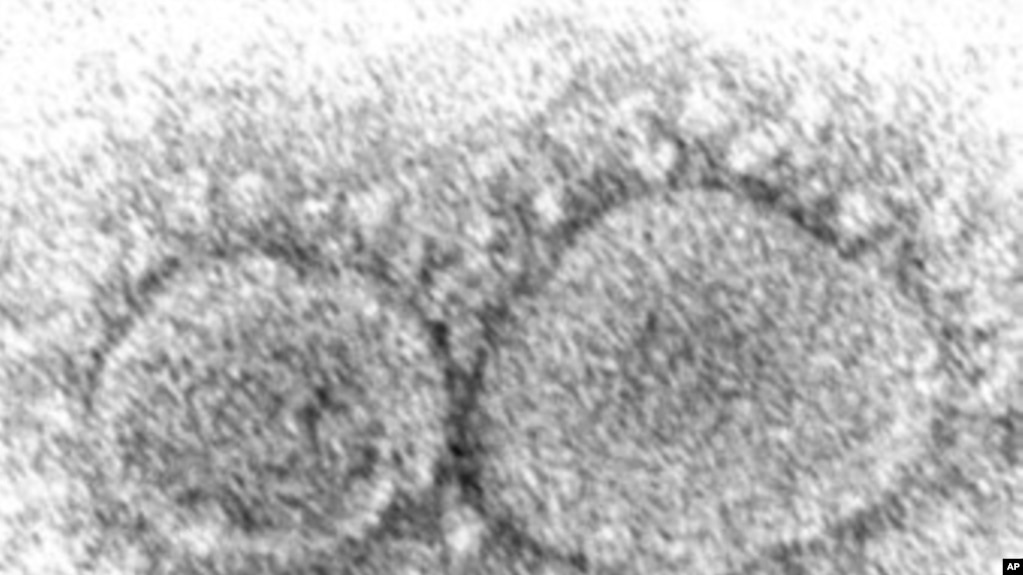未だ解かれぬ謎:コロナウイルスはどこから来たのか?
まさに、その通りですね!!
もしこの内容が真実に近いのであれば、”あら、失礼!”では済まされません。ここのあるマサチューセッツ工科大学とハーバード大学のブロード研究所の分子生物学者Alina Chan氏は大丈夫なのでしょうか?心配になりました。
ともあれ、解明が進むことを願っています。あまりにも我々は多大なる代償を払わされたのですから!
VOAで今日も英語を学びましょう!!
COVID-19の開始をめぐる深い問いかけ(和訳)
Deeper Questions about the Start of COVID-19
March 01, 2023
世界中の政府や保健機関は、重要な質問にまだ答えることができていません。COVID-19の原因となるウイルスはどこから来たのか?
DOEの報告書とWrayのコメント
今週、COVID-19の始まりの問題に注目が集まったのは、2つの出来事があったからです。
1つ目は、米国エネルギー省(DOE)の新しい報告書です。この報告書は、このウイルスが実験室の漏洩から始まったことを”低い信頼性”で示唆しています。この情報は、この報告書を知る人物からのものですが、それについて話す正式な許可は得ていません。
DOEの発見は、週末にウォール・ストリート・ジャーナル紙で初めて報道されました。その記事によると、この機密(シークレット)報告は、新しい情報に基づいているとのことでした。
2つ目の出来事は、Fox Newsでの連邦捜査局(FBI)長官クリストファー・レイ氏との討論でした。レイ氏は、「FBIはかなり以前から、パンデミックの起源は(中国中部の)ウーハン(武漢)で起きた潜在的な研究所の事件である可能性が高いと評価している。」と述べました。
中国は、COVID-19が中国の研究所から来たという指摘を "根拠がない "と言っています。
レイ氏のコメントに対して、(中国)外交部報道官のマオ・ニング氏は、米国の情報機関の関与は、"起源追跡の政治化 "を示す十分な証拠であると述べました。
コンセンサスなし
しかし、米国の情報機関の他の人々は、COVID-19の始まりは依然として不明であると指摘しています。
国家安全保障会議のスポークスマンであるジョン・カービー氏は、COVIDの始まりについて、完全な合意を意味するコンセンサスという言葉を用いて説明しました。彼は、「COVIDがどのように始まったかについて、今、米国政府にはコンセンサスがない 」と述べました。
2021年、当局は情報報告書の短縮版を発表しました。それによると、米国の情報機関の4人のメンバーは、ウイルスが最初に動物から人間に感染したと低い信頼性で信じていました。5人目のメンバーは、最初の人間への感染が実験室(ラボ)に関連していると、中程度の信頼度で考えていました。
科学者の中には、ラボリーク説を容認する者もいます。しかし、ウイルスが動物からやってきて変異し、人の中に飛び込んだと考え続けている人もいます。専門家によると、パンデミックの本当の始まりは、何年も、いや、これからもわからないかもしれないとのことです。
さらなる調査
アリーナ・チャン氏は、マサチューセッツ工科大学とハーバード大学のブロード研究所の分子生物学者です。チャン氏は、各機関がどのような新しい情報を得たかはわからないと述べています。しかし彼女は、その情報が中国のウーハンウイルス研究所の活動に関連していると考えるのが妥当であると示唆しました。
彼女は、そこの科学者と米国の共同研究者が共同執筆した2018年の研究計画書に、"本質的にCOVID似のウイルスの青写真が記載されていた "と述べました。
チャン氏は、「2年も経たないうちに、そのようなウイルスが市内でアウトブレイクを引き起こしていました 」と付け加えます。
ウーハンの研究所は、何年も前からコロナウイルスの研究をしていました。それは、SARSのような類似のウイルスが広く心配されるようになったからです。SARSはコロナウイルスの一種で、2003年から大規模なアウトブレイクを引き起こしました。多くの専門家は、コロナウイルスが次のパンデミックの原因になりうると考えていました。
COVID-19を引き起こしたコロナウイルスが意図的に放出されたと思っていると述べた情報機関はありません。機密扱いでない2021年のまとめでは、この点について明確にこう述べています:「このウイルスは生物兵器として開発されたものではないと判断する 」と。
COVID-19の始まりの探索についての本を共同執筆したチャン氏は、ラボの事故は意外とよく起こるものだと述べています。
また、「研究所の事故は公に語られることがないため、多くの人はあまり耳にしません」とも。
チャン氏は、このような事故は、"危険性の高い病原体を扱う作業をより透明化し、より説明責任を果たす必要がある "ことを示すものだと示唆しました。
昨年、世界保健機関(WHO)は、研究所の事故の可能性について、より深い調査をするよう勧告しました。チャン氏は、今回の報告書が米国での調査強化につながることを期待していると述べました。
Deeper Questions about the Start of COVID-19
Governments and health agencies around the world have not yet been able to answer an important question: Where did the virus that causes COVID-19 come from?
DOE report and Wray’s comments
This week, two events have drawn attention to the question of COVID-19's beginnings.
The first was a new U.S. Department of Energy (DOE) report, which has not been made public. It suggested with “low confidence” that the virus began with a laboratory leak. That information comes from a person with knowledge of the report but does not have official permission to discuss it.
The DOE’s finding was first reported over the weekend in the Wall Street Journal newspaper. The story said the classified, or secret, report was based on new intelligence.
The second event was a discussion with Federal Bureau of Investigation (FBI) Director Christopher Wray on Fox News. Wray said, “The FBI has for quite some time now assessed that the origins of the pandemic are most likely a potential lab incident in (central China’s) Wuhan.”
China has called the suggestion that COVID-19 came from a Chinese laboratory “baseless.”
Responding to comments by Wray, Foreign Ministry spokeswoman Mao Ning said the involvement of the U.S. intelligence community was evidence enough of the “politicization of origin tracing.”
No consensus
But others in the U.S. intelligence community suggest that COVID-19's beginnings remain unclear.
John Kirby, the spokesman for the National Security Council, used the term consensus, meaning complete agreement, to describe the beginning of COVID. He said, “There is not a consensus right now in the U.S. government about exactly how COVID started.”
In 2021, officials released a shortened version of an intelligence report. It said that four members of the U.S. intelligence community believed with low confidence that the virus first passed from an animal to a human. A fifth member believed with moderate confidence that the first human infection was linked to a laboratory, or lab.
Some scientists are open to the lab-leak theory. Yet others continue to believe the virus came from animals, mutated, and jumped into people. Experts say the true beginning of the pandemic may not be known for many years — if ever.
More investigation
Alina Chan is a molecular biologist at the Broad Institute of Massachusetts Institute of Technology and Harvard. Chan said she is not sure what new intelligence the agencies had. But she suggested it was reasonable to think the intelligence is connected to activities at the Wuhan Institute of Virology in China.
She said a 2018 research proposal co-written by scientists there and their U.S. collaborators “essentially described a blueprint for COVID-like viruses.”
Chan added, “Less than two years later, such a virus was causing an outbreak in the city."
The Wuhan institute had been studying coronaviruses for years. That is because similar viruses like SARS have caused widespread concerns. SARS was a coronavirus that caused a major outbreak starting in 2003. Many experts thought that coronaviruses could be the cause of the next pandemic.
No intelligence agency has said they believe the coronavirus that caused COVID-19 was released on purpose. The unclassified 2021 summary was clear on this point, saying: “We judge the virus was not developed as a biological weapon.”
Chan, who co-wrote a book about the search for COVID-19 beginnings, said that lab accidents happen surprisingly often.
She added, “A lot of people don’t really hear about lab accidents because they’re not talked about publicly.”
Chan suggested that such accidents show there is “a need to make work with highly dangerous pathogens more transparent and more accountable.”
Last year, the World Health Organization recommended a deeper investigation into a possible lab accident. Chan said she hopes the latest report leads to more investigation in the United States.
Words in This Story
assess – v. to make a judgment about (something)
origin – n. the point or place where something begins or is created; the source or cause of something
potential –adj. possible; able to become real
trace –v. to find something out by collecting and studying evidence
mutated – v. to change in form from one thing to another
collaborator – n. a person who works with another person or group to achieve or do something
blueprint – n. a detailed plan of how to do something
pathogen – n. something (such as a type of bacteria or a virus) that causes disease
transparent -- adj. honest and open; not secretive
accountable – adj. required to explain actions or decisions to someone; required to be responsible for something
